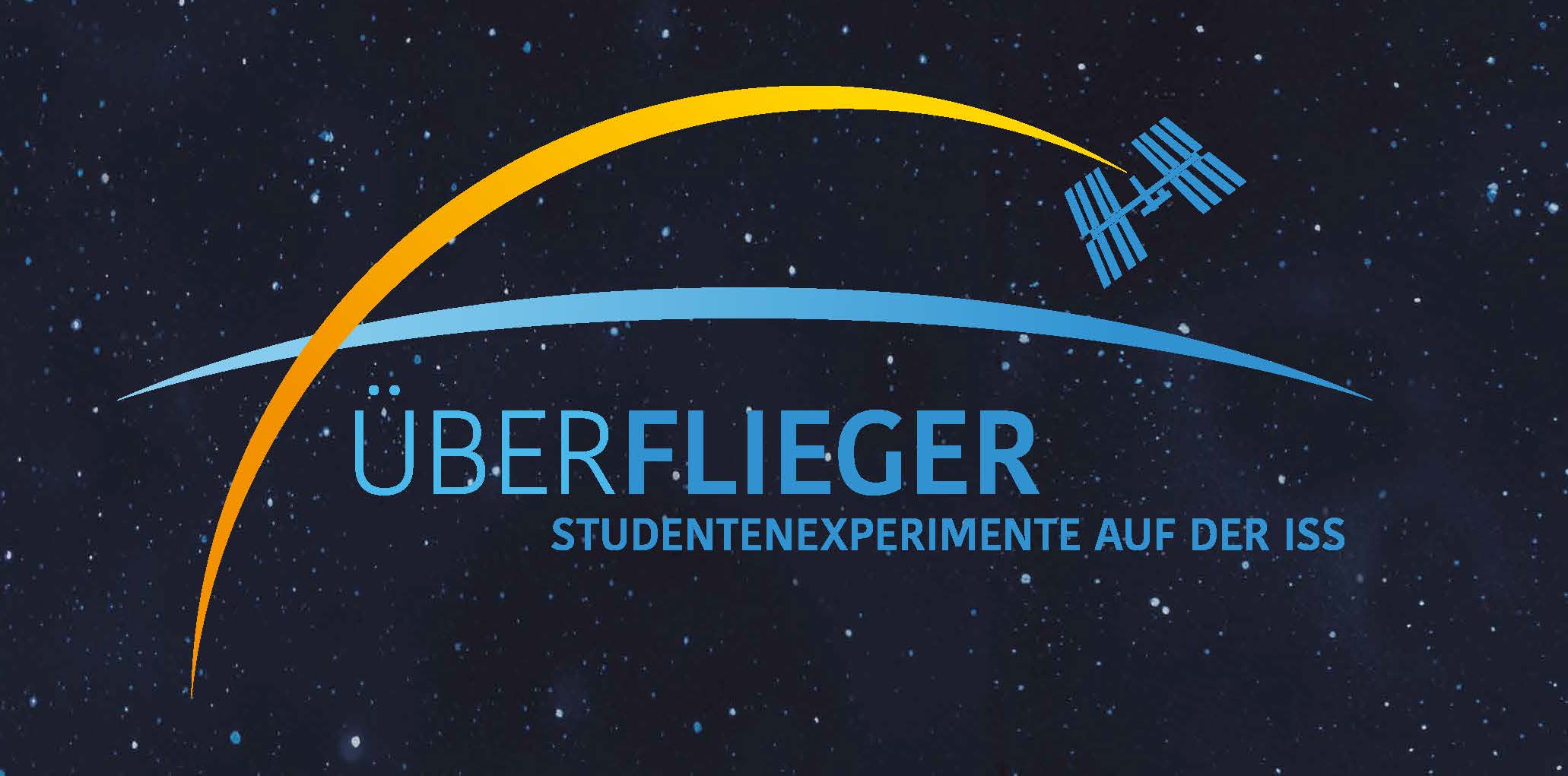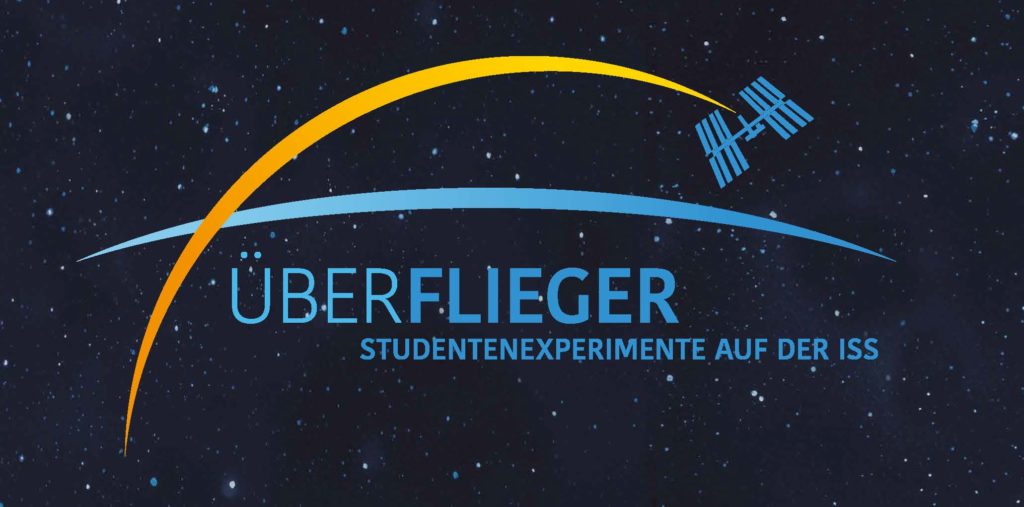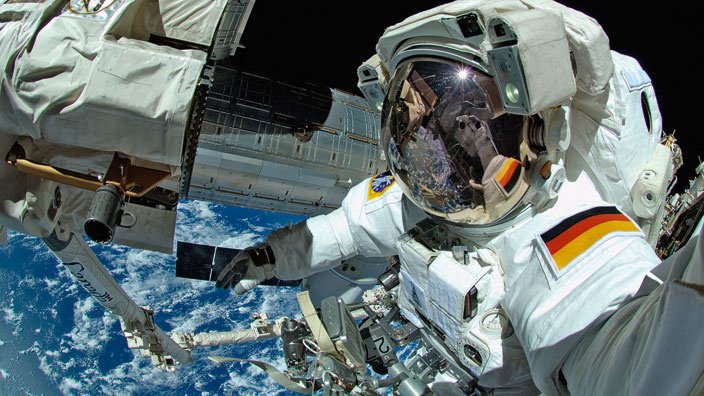
University Teams from Frankfurt, Stuttgart and Duisburg-Essen Will Send Their Experiments to the International Space Station
DreamUp is thrilled to announce the selection process for the Überflieger competition is complete! The three winning student teams come from Goethe University Frankfurt, University of Stuttgart and University of Duisburg-Essen. The winners’ experiments will be launched to the International Space Station (ISS) during the upcoming mission of German ESA astronaut Alexander Gerst in the summer of 2018. The experiments, scheduled to be operated personally by Mr. Gerst on the space station, include investigations into the formation of planets and space technologies.
After being selected from more than two-dozen initial applications, eight university teams from all over Germany qualified for the final selection round of the competition. The two-day selection workshop took place May 4 – 5, 2017 at the German Aerospace Center (DLR) in Bonn. Students presented their experiment proposals and took questions from an expert board of evaluators.
“There were exciting experiment ideas in the fields of space technologies, biology and astrophysics among the proposals”, stated Johannes Weppler, Competition Lead at DLR Space Administration. “It was not easy to make a selection. The winners will have a year to design, build and test their experiments.”
The German astronaut Gerhard Thiele was part of the selection board alongside experts from DLR and the German Physical Society (DPG).
“I was pleased to see the enthusiasm, but also the professionalism that the teams displayed during their presentations”, said Thiele. “We did not make it easy for them: We put their ideas to the test and posed many tricky questions about tiny details.”
The main criteria used to make the final selection included the scientific value, the technical maturity and the feasibility of each proposal. It was a difficult process, given the high quality of all the teams’ presentations.
How Do Planets Form?
The student team from Goethe University Frankfurt titled their experiment EXCISS (Experimental Chondrule Formation on the ISS). The students will investigate the formation of chondrules, small lumps of mineral components that are the foundation of Chondrites, meteorites that stem from the very beginning of planet formation. The experiment calls for the observation of a cloud of sand dust, which will be exposed to repeated electrical discharges. The energy from these lightning collisions will create particles and should contribute to a better understanding of the planet formation process.
ARISE (Planet Formation Due to Charge Induced Clustering on ISS) is the project from the University of Duisburg-Essen team. It also addresses the topic of planet formation, investigating the role particles’ electrical charges play during the birth of new celestial bodies. Current research indicates that particles up to a certain size stick to each other after collisions. A new theory predicts that bigger lumps are created by electrical interactions between particles. In order to prove this theory the students will observe the collisions of glass beads, which simulate cosmic particles, in microgravity.
Propulsion Technology for Tomorrow
“PAPELL” (Pump Application Using Pulsed Electromagnets for Liquid Relocation) is the name of a technology experiment from the student team at the University of Stuttgart. The experiment involves a new pump technology, which could be used in space propulsion systems. The pump moves a “ferrofluid”, a liquid that contains tiny magnetic particles, by means of electromagnets, which allows the pump to avoid using mechanical parts. Without such parts, propulsion systems might be able to minimize mechanical errors and noise creation, a huge benefit for astronauts inside a spacecraft. In two sub-experiments the team will also investigate the transport of the ferrofluid and small solid spheres.
###

The Student Competition “Überflieger”
From December 14, 2016 to February 28, 2017 student teams across Germany had the opportunity to apply for the “Überflieger” competition. The contest allows student teams to experience the entire project cycle of a space mission: from the formulation of their scientific goals, to the technical design, to the necessary tests on ground and the operations of the experiments on the ISS. The size of the experiments is constrained to containers of 10 x 10 x 15 centimeters. The three winning teams also have the opportunity to witness the launch of their experiments at the launch site. On orbit the experiments will be operated for at least 30 days.
The student competition “Überflieger” is organized by DLR Space Administration with funding from the Federal Ministry for Economic Affairs and Energy (BMWi). DreamUp PBC provides the technical know-how, supports the students during experiment implementation and manages the logistics of launching the experiments to the ISS with launch services provider NanoRacks. Experts from the German Physical Society (DPG) support DLR during experiment selection and contribute their know-how in many fields of physics research during all phases of the competition


[…] Additionally, NanoRacks flew two experiments, ARISE and PAPELL, as a part of the Überflieger contest in partnership with DLR and DreamUp. ARISE investigates collisions and particle aggregation in space. PAPELL tests the functionality of a ferrofluid pump in microgravity. Learn more about the Überflieger program here. […]
[…] opportunities in space. The Überflieger program sponsored flights and educational programming for three winning German university teams to fly experiments to the Space Station via NanoRacks’ services. EXCISS, from Goethe University […]